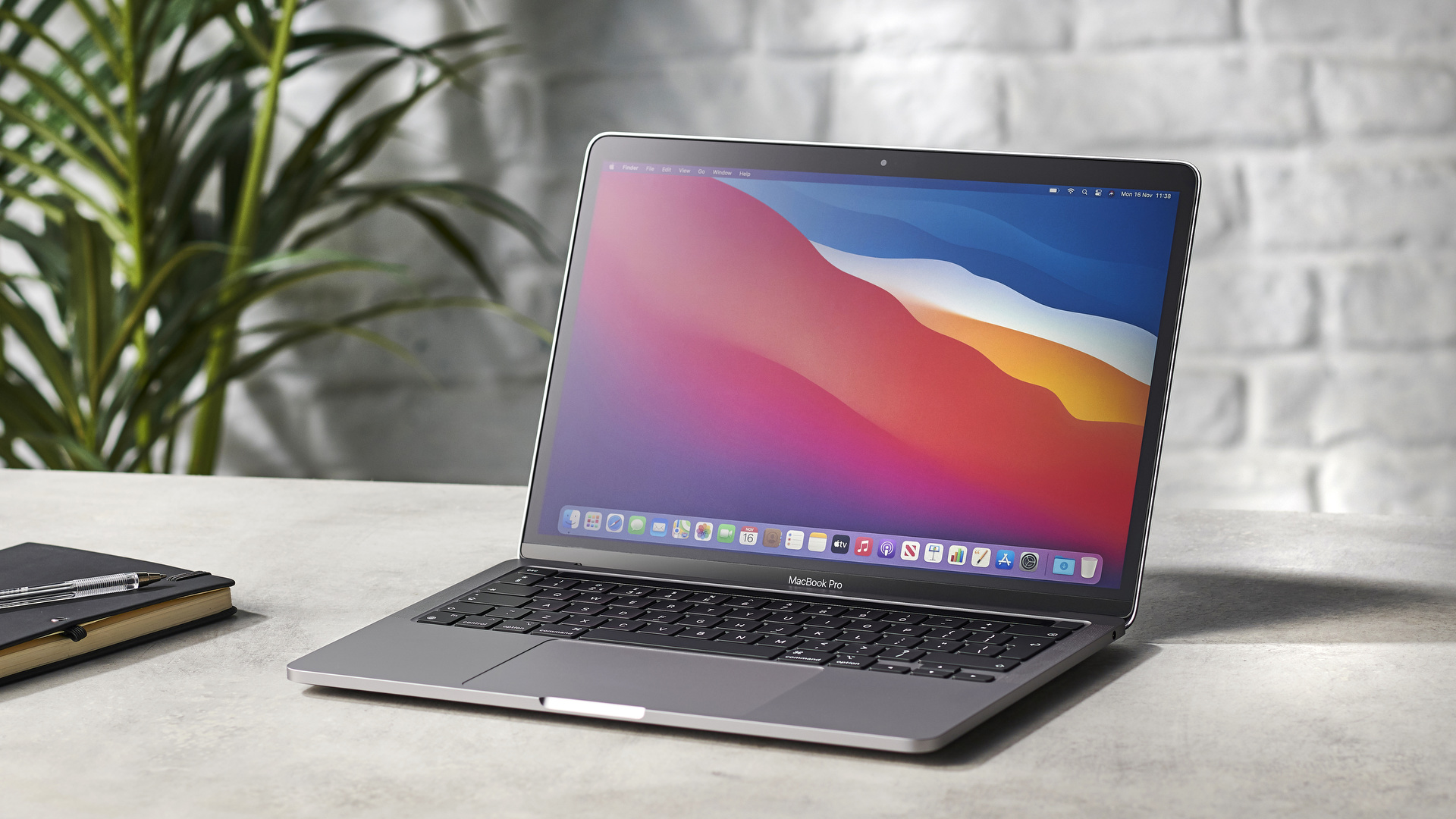Please, Apple, prove me wrong about the M2 at the March Event
The best processors are better than ever, now it’s Apple’s turn again

When Apple launched the MacBook Air and 13-inch MacBook Pro powered by the M1 chip in November 2020, it was during a transition period for Intel. The 10th and 11th-generation Intel processors for laptops were a bit stagnant, as performance had basically stalled, and AMD was catching up.
However, the Apple M1 totally rocked the boat, and took the performance lead pretty much across the board when it came to the best laptops.
But a lot has changed in the year and a half since then, and Apple isn't the only tech titan that’s managed to make the ARM-inspired big.LITTLE design actually work for real computers. Intel Alder Lake is incredible, and now that the P- and U-series chips are on their way to market in thin-and-light designs like the Dell XPS 13 Plus, Apple is going to need to push a bit harder.
With the Apple March Event today, it's likely we'll see several devices, and a new piece of Apple silicon could take center stage, powering Apple's 2022 consumer catalog.
But while the M1 was basically able to charge in and take over the world of laptops, the M2 would have to challenge the best processors either AMD or Intel have put in mobile devices in years.
- Follow along live: Apple March Event live blog
It's about more than chips
Before I go any further, it’s important to note that when it comes to the silicon that gets shoved into a laptop, the way the system as a whole performs is much more important than the capabilities of a single chip. Because at the end of the day, we can benchmark and benchmark mobile processors, but it’s not like you’re going to be able to buy one and slot it into an existing system – so the chip’s individual capabilities are a bit less important than they may seem.
Apple addresses this in its systems by making the M1 as a System-on-a-Chip (SoC) design. That means the CPU, GPU, memory and storage are all essentially smaller pieces of one big chip.
Sign up for breaking news, reviews, opinion, top tech deals, and more.
Most PCs, on the other hand, have discrete components attached to a motherboard, and the CPU is usually just a CPU. This has shifted a bit in recent years, but it gives laptop manufacturers much more flexibility in what’s included in each laptop, and allows these companies to build devices that are purpose-built for specific workloads.
The Apple M2, no matter how good it is, will be limited to what the chip can do by itself. There will be no way to get a machine that combines the power of the M2 with discrete graphics, and, of course, you won’t be able to upgrade it with more RAM or storage down the line, either.
This works in favor of Windows 11 machines, of course. While the thin and light Windows devices that would typically go up against the MacBook Air don’t usually let you choose your CPU companions, you can totally get a laptop with dedicated graphics that push ahead of what the even the 16-inch MacBook Pro can do – even with one of these fancy new chips.
It’s just important to keep in mind that Apple will make some claims about how the M2 compares with current-generation silicon found in Windows PCs, but it doesn’t take into consideration what specialized hardware on devices can do, or how it can significantly improve performance for people that actually need it.
big.LITTLE is mainstream now
When the M1 hit the market, Apple hit the ground running making sure every piece of legacy software would be supported in one way or another. For the most part, the company accomplished this through the Rosetta translation layer, which runs at the time of installation to make an app compatible with the new Arm architecture, rather than the x86-based silicon every Mac has used since 2006.
This was worth it for Apple, because it moved its laptops to a new big.LITTLE chip layout. This hybrid chip design essentially has two types of CPU cores: big performance cores for heavy workloads, and smaller ‘efficient’ cores to handle background tasks. This is something that’s been used by Arm processors for years in your smartphone, but Apple brought it to computers in a big way.
But Intel transitioned to this more efficient chip layout without requiring a translation layer at all. Because Alder Lake processors are still based on an x86 instruction set, you get guaranteed compatibility with most Windows 11 software, while still getting the benefits of power efficiency and raw throughput.
We haven’t got our hands on an Alder Lake-based ultraportable laptop yet, but from what we’ve seen in the gaming laptops we’ve tested – which are as a rule a lot less power efficient than something like a Dell XPS 13 – battery life sees a marked improvement over 11th-generation Intel H-series chips.
Still, Intel doesn’t share Apple’s ecosystem advantage. Just like with the iPhone, Apple is now in control of both the Mac hardware and the macOS software that powers it. Because of this, you can generally expect better battery life out of anything Apple produces, because inefficiencies between the hardware and software will be rare.
That doesn’t mean Windows PCs are left out in the cold, though. Intel did improve its Evo program, and battery life continues to be a central tenet there. Will it be enough to dethrone Apple’s current battery life crown? Probably not, but it’s enough to make sure that any difference that is there is likely to be minor. Though, at the end of the day, if battery life is your only main concern, you should be buying a MacBook Air, anyways.
The only mainstream CPU platform that isn’t using a hybrid chip design like the M1 and Intel 12th-generation processors is AMD Ryzen 6000, which is still using 8 big cores in its most powerful mobile processors. But in my testing so far, it lags behind both Apple and Intel in most CPU-heavy workloads. I’ll be visiting that much more in depth later in a full performance breakdown of the three major PC hardware platforms for laptops.
We need to wait and see where the chips fall when and if Apple actually reveals an M2 processor at its March 2022 event. But it’s unlikely that Apple will completely blow the computing world away like it did a couple of years ago with the M1. But, here’s hoping it actually does. I don’t like being wrong, but if I’m wrong about this, it means that Apple will jump-start the CPU market again, and that just makes my life more interesting.
- Check out the best Macbook and Macs

Jackie Thomas is the Hardware and Buying Guides Editor at IGN. Previously, she was TechRadar's US computing editor. She is fat, queer and extremely online. Computers are the devil, but she just happens to be a satanist. If you need to know anything about computing components, PC gaming or the best laptop on the market, don't be afraid to drop her a line on Twitter or through email.